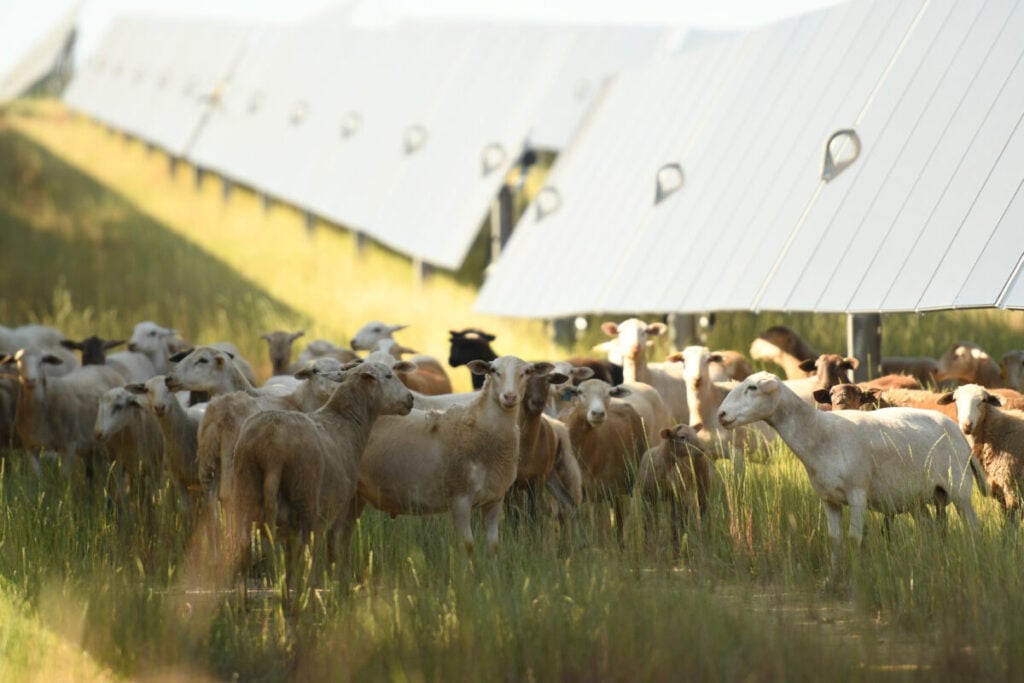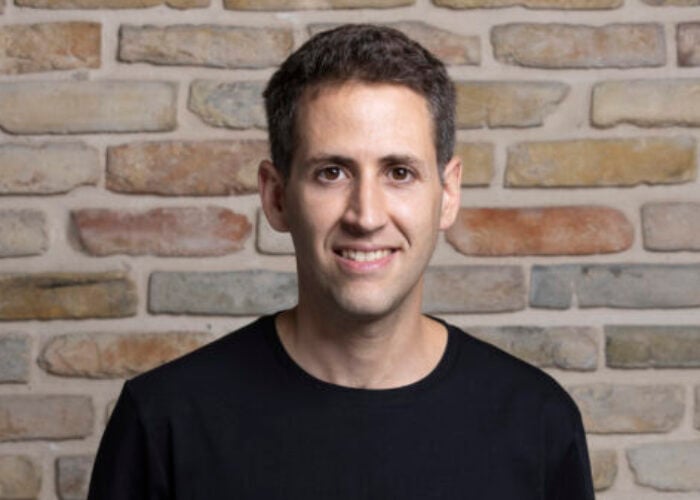
Jonathan Touriño Jacobo profiles Silicon Ranch, a US independent power producer whose ‘Regenerative Energy’ concept takes a holistic and long-term approach to PV project development, in PV Tech Premium’s third story on local opposition of the week.
The ways in which a solar company engages with the local community in an area where a PV project is being built can vary greatly between countries, regions or even companies. It is not the same being a solar developer that takes care of the development phase of a project whose business model is to sell it when it reaches ‘ready-to-build’ status as, say, an independent power producer (IPP) who aims to develop, own and operate the plant for the next 30 to 40 years.
Try Premium for just $1
- Full premium access for the first month at only $1
- Converts to an annual rate after 30 days unless cancelled
- Cancel anytime during the trial period
Premium Benefits
- Expert industry analysis and interviews
- Digital access to PV Tech Power journal
- Exclusive event discounts
Or get the full Premium subscription right away
Or continue reading this article for free
This distinction alone can change a company’s perception of how to engage with the local community and how to care for the land on which the project is being built. In the US, one company that has put long-term commitment to the communities affected by its projects is Nashville-headquartered IPP Silicon Ranch.
Founded in 2011 by three public servants from the state of Tennessee, Silicon Ranch has made its role as a long-term owner and operator of the projects it develops a key part of its approach as a solar company. At the end of 2024, the IPP had 3.6GW of operational capacity and a presence in 16 US states from coast to coast and also one Canadian province.
Local opposition used to be an anomaly
“It’s important to acknowledge local opposition wasn’t a thing we had to deal with as an industry for many years,” explains Matt Beasley, chief commercial officer at Silicon Ranch. He adds that it was more of an anomaly to encounter opposition from a large-scale solar PV plant, as projects were smaller and there were fewer installed solar across the country.
Opposition is now more common and, as Beasley says, a serious problem. “Local opposition is the most existential threat to the energy transition in the United States,” he says.
But as Beasley explains it is not necessarily uniquely a product of wider political division in the US over many topics but also created by negative experiences from within the industry.
“Sometimes when we’ve encountered opposition, it’s been because of the actions of somebody who’s been there before us, developers who have come in and made promises that they couldn’t keep, either to a landowner or to county officials, local officials,” he says.
Beasley says that this is one of the reasons why, when Silicon Ranch decides to develop a solar project, it will engage in conversations early on with the community that will be affected by the project. This includes many local stakeholders, from the neighbours or landowners to the development authority or the Chamber of Commerce.
“We host town halls. We don’t just engage and debate in public hearings. In Alabama, we hosted a meeting specifically to invite an opposition group to engage in a thoughtful dialogue about a particular project,” says Beasley.
“Sometimes it’s important to listen,” Beasley adds. “So much so that we actually started, in certain cases, putting political polls in the field, in addition to our own town halls, and listening sessions, because you want to make sure you really understand how the general public perceives what we’re trying to accomplish. That gives us better insights to make sure that we are doing what we can to integrate more seamlessly into the fabric of that community.”
In addition to holding town halls and participating in public hearings, the company has also been very active on social media, particularly on Facebook, where opposition groups will be active.
“It’s not just posting content and then letting it sit there. Our team spends a lot of time actually responding to the negative questions or comments that are posted on our posts, and actually using social media as a means of reaching a broader audience targeted within a community about the specifics of a specific project.”
Not just an IPP, a landowner too
Beasley says that keeping promises about what it will do with its projects is also important for a company that wants to build, own and operate a project without the intent of reselling it at any point. “That’s another layer of our business model that’s helped us be successful,” he says.
“That unique point of differentiation at the very early stage has helped influence the way we’ve engaged communities. Because we’re going to be the owners and operators of every project, it changes the way you think about your engagement with the landowner, with the neighbours, with the county commissioners, the mayors, your customers, your strategic supply partners and everything. One of the other pieces early on that we decided we wanted to do as well, was own the land.”
As an IPP, the fact of building, owning and operating a project is an important factor to that success and trust from local stakeholders, explains Beasley. This model of being long-term owners of a project, compared to other companies that primarily develop a project and then sell it to finance the next project, helped influence Silicon Ranch in how it engaged with communities.
The engagement does not end once the project is operational, explains Beasley: “A lot of the things I’m most proud of are engagement activities that we have undertaken after a project has reached operation, where we’re still in the community and still adding value as part of that process.”
The ways to approach a community can vary from project to project, such as engaging with schools not just to speak in classrooms but also to provide data for use in STEM projects. Charitable contributions or participating in scholarship or community programmes are other ways to extend engagement with local communities, says Beasley.
“That helps us extend that engagement through the lifecycle of the project. But it also allows another community within that same region to see what we’re doing and understand how authentic we are in terms of the commitments that we’re making.”
Land regeneration
The distinction between leasing the land and owning it also has an impact on how companies such as Silicon Ranch treat the land where their projects are built. Long-term ownership incentivises a company to take care of the land in the best way possible and implement ideas for it. Not only that, Beasley adds that it also changes how the community views the company as “a property taxpayer, as a member of the community, rather than a renter, so to speak, who’s leasing land that they’re going to be giving back to the landowner when their project is done”.
This idea of harnessing the potential of the land where a solar project is built sits behind a concept Silicon Ranch has developed that it calls ‘Regenerative Energy’. This idea emerged after the company engaged in a conversation with a project’s neighbour in the state of Georgia, says Beasley. The neighbour in question is Will Harris, owner of White Oak Pastures, who is a well-known practitioner of regenerative agriculture. One of Harris’ concerns was how Silicon Ranch took care of its vegetation and how this could affect the soil of his own property.
Through a dialogue with Harris, Silicon Ranch developed ‘Regenerative Energy’ which consists of applying regenerative land stewardship techniques to optimise the value of the land. In essence it means designing, building and operating projects that align with natural systems to promote soil health, biodiversity, water quality and habitat, and harness he potential of solar land to add value beyond the generation of power.
One of the most common regenerative agriculture practices used across the US is sheep grazing, which has benefits to soil health, biodiversity and carbon sequestration, and Silicon Ranch has adopted this approach in some of its projects.
“We own our own flock of sheep,” says Beasley. “We partner where we can with local ranching partners, but everywhere else, we are growing our own flock of sheep. We own one of the largest flocks of sheep in the eastern United States.”
Sheep grazing isn’t appropriate in all projects, so in situations where it can’t be implemented, Silicon Ranch takes other approaches to land regeneration. For example, Beasley highlights a project in the coastal region of South Carolina where the company aims to plant 200 acres of Monarch Butterfly pollinator habitat.
Beasley says that although its regenerative energy approach was not designed simply to address local opposition, finding beneficial ways to use the land of a solar project site other than simply installing solar arrays is also an important way to engage with the local community.
“When communities say, ‘Are you taking land out of agricultural production to use it for energy?’, we’re able to say it doesn’t have to be a zero-sum game. It doesn’t have to be either or, it can be ‘and’. You can use the land for multiple uses of value, to generate renewable electricity and grass-fed needs as well,” says Beasley.
Engaging with communities
The importance of creating a relationship between the IPP and the local communities near a solar site can be better understood in Silicon Ranch’s economic and community development group. This was modelled after one of the founder’s former role as a commissioner of economic and community development.
“This group is really responsible for going in and helping to tell our story and to build relationships and humanise our organisation,” explains Beasley. The idea behind that group is to engage with communities in the states where the company is present and give examples of nearby or similar projects in the state as a way of introduction to Silicon Ranch.
“For us, community engagement isn’t just about the transaction of getting the permit. It’s about building relationships that we nurture and cultivate long after we commission and achieve commercial operation for a plant. These relationships that we’re going to carry on for the 40-year useful life of the project,” concludes Beasley.






